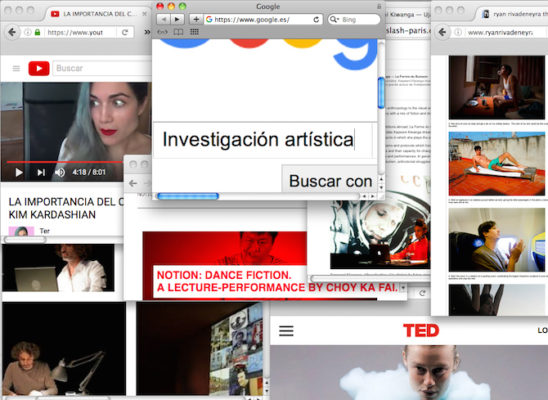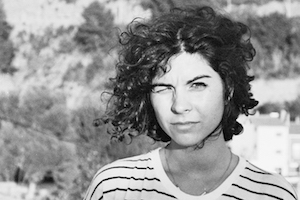Search
To search for an exact match, type the word or phrase you want in quotation marks.
A*DESK has been offering since 2002 contents about criticism and contemporary art. A*DESK has become consolidated thanks to all those who have believed in the project, all those who have followed us, debating, participating and collaborating. Many people have collaborated with A*DESK, and continue to do so. Their efforts, knowledge and belief in the project are what make it grow internationally. At A*DESK we have also generated work for over one hundred professionals in culture, from small collaborations with reviews and classes, to more prolonged and intense collaborations.
At A*DESK we believe in the need for free and universal access to culture and knowledge. We want to carry on being independent, remaining open to more ideas and opinions. If you believe in A*DESK, we need your backing to be able to continue. You can now participate in the project by supporting it. You can choose how much you want to contribute to the project.
You can decide how much you want to bring to the project.

Sheldon Cooper: So, an artist…
Antonio Ortega: I sense a certain distrust in these words…
S: Well, I’m a scientist, as you’ll understand, contemporary art seems to me something too ethereal and irrelevant.
A: How curious, I believe that artists and scientists have a lot to learn from one another. In fact, I think that artists also investigate, both are researchers, strike it here mate!
S: Research? Art is research? What do you call research? Propose a hypothesis, demonstrate it, prove it false, test, corroborate, peer review…Do you do all this when you paint a painting?
Research in Culture – IProductions, 2012.
There are those who believe that research is only that which follows a specific methodology. Whether research can really exist in the field of the arts, enters into the debate. Although if wanting to submit art to rigid and universal structures is a contradiction in itself, nonetheless it is true that artists have taken advantage of methods typical of other disciplines, such as the pure or social sciences, to carry out their work. Art acts as a space for experimentation and theoretical speculation that can rouse awareness, and contribute knowledge and other kinds of discoveries to society. Although unlike other professions, it has no obligation to do so, and this detachment makes possible the gall, the game, the absurd and the humour, toppling the foundations of certainty, of established truths, making us, perhaps, more aware of our errors, injustices, nonsense, and marvels. It is in this space, on the margins, without rules or protocols, where artistic research distinguishes itself from other forms of investigation. And all this is not done by accident. It requires a time for study, thought, and observation. A time to imagine, compare, sketch, speculate, try and rectify, and in many cases, hours when nothing is produced.
So it has been at all times, generating knowledge is not exclusively typical of contemporary art. The history of art makes it clear that in each one of its stages there has been an expressive intention, with which understanding has been gained, already from its beginnings with the cave paintings representing hunting stories. Art has been a means with which to understand the world. Nevertheless, they are characteristics of our society of heterogeneous formats. Amongst the possible combinations and explorations that can be indicated in artistic research, Henk Borgdorff [[The Debate on Research in the Arts (2010)]] distinguishes three types, these are according to him, “about the arts”, “for the arts”, or research “in the arts”.
Research about the arts is characterised by having the aim of studying artistic practice, reflecting on it and interpreting it through theory. Here we could find investigations realised by up to date theorists like the You-tuber Ter (@teruriru) in which she analyses and links questions of art and architecture to popular culture; series, celebrities and reality shows. Her investigations are turned into online shows, they are theories scraped together, but not for that less certain, considered or significant. Ter applies the methods integrated into her training in architecture: rigour, precision, capacity to resolve problems…As she shows in her legendary video “La importancia del culo de Kim Kardashian” (The importance of Kim Kardashian’s bum) where she states that the golden proportion dies after the appearance of the Kardashians and their new corporal proportions. She expounds the information obtained from her hypothesis, her discoveries and diagrams, comparing them with the case of Le Corbusier when he related the measurements of the Parthenon with those of a car from the 1970s. Ellipses, elevations, 3D drawings; she minutely examines the rear of Kardashian to be able to apply a new unit of measurement, that according to Ter, is typical of our present day.
In the case of Research for the arts, art is not so much the object of investigation, as the objective. They are studies that are carried out to realise a specific artistic practice. As is the case, for example, of Choy Ka Fai, who, incidentally, self-defines himself not as an artist so much as a “speculative designer”. His technological and scientific experiments have allowed him to develop a digital memory that contains iconic movements from the history of dance. These implants emit stimuli to the muscles that respond, contracting and moving, generating what we could call programmed choreographies. Or the case of Lucy McRae, who also doesn’t consider herself an artist, or a fashion designer, which is what she studied, so much as she declares herself a body architect. McRae, along with a team of experts from different disciplines (technology, biology…) explores ways of transforming the body. Her designs act as an extension of the organic tissue. She has developed electric tattoos as well as perfumed pills that modify body odour.
In third and final place, research in the arts refers to research that assumes there is no separation between the researcher and artistic practice. This approach is based on the idea that no fundamental division exists between theory and practice. The investigation itself is the work of art. Fictional narratives enter into communion with the resources of storytelling, stand-up comedy, or pedagogical tools, with the possibilities that technology affords creativity. So, we encounter works such as E-Mails Concerning Happenings Considering Photography by Ryan Rivadeneyra, The inhabitants of images by Rabih Mroué, Afrogalactica Kapwani Kiwanga, et al. In many of these cases, these types of practice are known as performative talks; expanded presentations, half way between action and discourse, academia and spectacle. Specific spaces exist destined for their diffusion, such as the Journal for Artistic Research, a platform that stands out for its rigour and creative way of presenting artistic research online. Or, others that would fit, in the context of Barcelona, are the projects of Hangar, and specifically the Grid Spinoza, which annually receives professions for research into the crossovers between art, science and technology.
In all these cases, if the artistic researchers follow or not to the letter methodologies that are open to revision or extensions by others; if they propose hypotheses and demonstrate them as true or false, test, corroborate or peer review them…is just by the way. Just as it doesn’t really matter if certain details are hidden, as in the documentary that moved Western spectators a few years ago about the “disappeared” and “rediscovered” musician Sixto Rodríguez. In the end what one stays with are the good stories.

Nerea Arrojería is an art historian specialized in photography. Among her lines of interest is the still or moving image used in contemporary societies, inside or outside the museum.
"A desk is a dangerous place from which to watch the world" (John Le Carré)